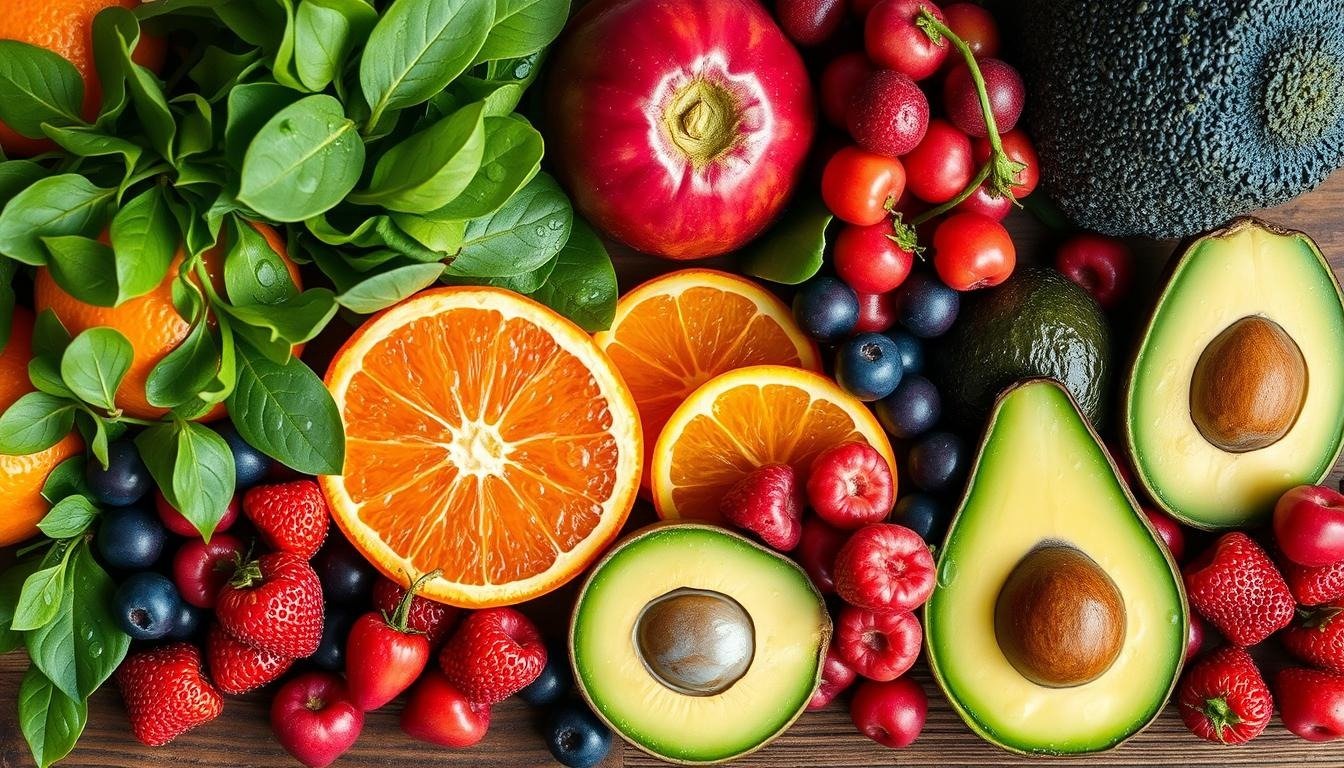Best Exercise for Highest: Top Workout Guide
To reach your peak fitness, you need a smart training plan. This guide covers the best exercises and high-intensity workouts. It helps you reach your fitness goals.
We’ll teach you about high-intensity training and its science. You’ll get the tools to push your body to new limits.
Key Takeaways
- Discover the most effective exercises for achieving your highest fitness goals
- Explore the science and benefits of high-intensity training
- Learn the key components of successful high-intensity workout sessions
- Understand how to incorporate high-intensity training into your overall fitness routine
- Uncover strategies to support your high-intensity training with proper nutrition and recovery
Understanding High-Intensity Training Fundamentals
High-intensity training (HIT) is popular for its great results. It pushes your body hard with short, intense exercises. These workouts boost your fitness and health.
The Science Behind High-Intensity Workouts
HIT focuses on metabolic conditioning. It raises your heart rate and works your muscles hard. This leads to burning more calories even after you stop exercising.
By going all out, HIT improves your heart, muscles, and metabolism. It makes you fitter and more efficient.
Benefits of Maximum Effort Training
- Improved cardiovascular health and endurance
- Increased fat-burning and metabolic rate
- Enhanced muscular strength and power
- Time-efficient workout routines
- Positive impacts on mental well-being and stress management
Key Components of Effective High-Intensity Sessions
Good HIT workouts need intense effort, rest, and getting stronger over time. Use big exercises, rest well, and get harder with each session. This way, you get the most out of HIT and see great results.
| HIT Workout Components | Description |
|---|---|
| Compound Exercises | Multi-joint movements that engage multiple muscle groups simultaneously, maximizing calorie-burning and metabolic response. |
| Work-to-Rest Ratios | Carefully planned intervals of intense effort followed by strategic recovery periods, allowing for optimal performance and adaptations. |
| Progressive Overload | Gradually increasing the intensity, volume, or complexity of the workouts over time to continually challenge the body and drive improvements. |
Learning about HIT lets you get the most from these workouts. You can reach your fitness goals with metabolic conditioning.
Best Exercise for Highest Calorie Burn Results
Some exercises are better than others for burning calories. These high-intensity workouts can help you lose weight fast. They work your body hard and help you reach your goals.
The burpee is a top choice for burning calories. It’s a mix of a squat, plank, and jump. This combo works many muscles and raises your heart rate. Doing burpees quickly can burn hundreds of calories in just a few minutes.
Kettlebell swings are also great for burning calories. They work your glutes, hamstrings, and core. Plus, they get your heart rate up, helping you burn calories fast.
| Exercise | Calories Burned (per 30 minutes) |
|---|---|
| Burpees | 240-360 calories |
| Kettlebell Swings | 210-300 calories |
| Jumping Jacks | 120-180 calories |
| High-Intensity Interval Training (HIIT) | 240-450 calories |
Jumping jacks and HIIT workouts are also good for burning calories. Jumping jacks work your whole body. HIIT mixes hard work with rest to keep your metabolism up.
Adding these workouts to your routine can change your weight loss journey. They help you reach your goals faster and more effectively.
“The key to maximizing calorie burn is to push your body to its limits with high-intensity, compound movements that engage multiple muscle groups at once.”
HIIT Workouts: Maximizing Your Training Potential
High-Intensity Interval Training (HIIT) is changing the fitness game. It’s a quick and powerful way to reach your fitness goals. HIIT mixes intense effort with rest, boosting your heart health, cardio routines, and fat loss.
Tabata Training Protocols
The Tabata protocol is a famous HIIT method. It was created by Dr. Izumi Tabata. It involves 20 seconds of hard work followed by 10 seconds of rest. This pattern is repeated for 4 minutes, improving your fitness greatly.
Circuit Training Variations
Circuit training is another popular HIIT method. It involves moving fast from one exercise to the next with little rest. You can customize it to work on specific muscles or your whole body, making it a fun and tough workout.
Recovery Periods and Their Importance
Resting between intense intervals is just as important as the work itself. It helps you avoid injury and get the most out of each hiit workout. Finding the right balance between work and rest is crucial for effective and safe HIIT training.
By using these HIIT training methods, you can reach your fitness goals efficiently. HIIT is a powerful and time-saving way to exercise.
Strength Training for Peak Performance
Incorporating strength training regimens into your high-intensity routine is a game-changer. It helps build muscle and boosts your metabolism. This is key for metabolic conditioning.
Strength training unlocks many benefits for your fitness goals. It increases muscle mass and strength. It also improves bone density and joint stability.
Unlocking the Power of Strength Training
Strength training stimulates muscle growth. It challenges your muscles with resistance exercises. This leads to bigger muscles and a higher metabolic rate.
- Develop Lean Muscle Mass
- Improve Metabolic Efficiency
- Enhance Overall Strength and Power
Strength training also supports your cardiovascular health. It improves your athletic performance. Adding a strength training regimen to your routine boosts your physical prowess.
“Strength training is not just about building muscle; it’s about unlocking your true potential and transforming your body into a high-performance machine.”
To optimize your metabolic conditioning and reach new heights in your fitness goals, make strength training a key part of your routine. Unlock the power of resistance training and see your body transform.
Metabolic Conditioning: The Ultimate Fat-Burning Strategy
Discover the power of metabolic conditioning to boost fat-burning and fitness. This method combines exercises to raise your metabolism and burn fat. Let’s dive into what makes it the best way to lose fat.
Compound Movement Patterns
Compound exercises work many muscles at once. Squats, deadlifts, and burpees are examples. They make your body work harder, burning more calories and fat.
By focusing on these movements, you get a strong metabolic boost. You also build lean, functional muscle.
Optimal Work-to-Rest Ratios
Good metabolic conditioning needs the right work-to-rest ratios. Aim for 1:1 to 1:3, with work followed by rest. This keeps your heart rate up, maximizing fat burn and preventing tiredness.
Progressive Overload Techniques
To keep challenging your body, use progressive overload in workouts. Increase exercise intensity, duration, or resistance over time. This approach leads to better metabolic conditioning, fat-burning exercises, and weight loss strategies.
| Metabolic Conditioning Benefits | Traditional Cardio Benefits |
|---|---|
| Increased calorie burn during and after exercise | Improved cardiovascular health |
| Enhanced fat-loss and body composition changes | Improved endurance and stamina |
| Boosted metabolic rate for sustained energy | Reduced risk of heart disease and other chronic conditions |
| Improved muscle strength and power | Improved mood and mental well-being |
“Metabolic conditioning is the key to unlocking your body’s full fat-burning potential. By harnessing the power of compound movements, strategic work-to-rest ratios, and progressive overload, you can transform your physique and achieve your weight loss goals.”
Cardio Routines That Maximize Results
Reaching your fitness goals often depends on adding effective cardio routines to your workouts. These routines boost your heart rate and burn lots of calories. The right cardio exercises can change the game for a healthier, fitter you.
The sprint interval is a top choice for cardio. It involves short, intense efforts followed by rest. This method burns calories fast and boosts your heart health. You can sprint on a treadmill, track, or outside for great results.
Hill runs are another great option. They use incline training to work different muscles and raise your heart rate. Hill runs build strength, power, and endurance, making them a great cardio choice.
Circuit training offers a varied cardio experience. It involves quick transitions between exercises like jumping jacks, burpees, and jump ropes. This keeps your heart rate up, burning calories and improving fitness.
Adding these intense cardio routines to your workouts can lead to better results. Remember, sticking to it and enjoying the activities is crucial. Find the cardio you like and make it a regular part of your life.
Combining Different Training Methods for Superior Results
To get the best from your high-intensity training, mixing different exercises is key. This way, you can work on strength, power, endurance, and agility all at once. It makes your fitness program well-rounded and effective.
Hybrid Workout Structures
Hybrid workouts mix HIIT, strength training, and metabolic conditioning. They help you burn calories, build muscle, and boost athletic performance. Adding plyometrics, kettlebell swings, and compound movements can lead to faster fitness gains.
Periodization Strategies
Periodization means planning your workouts over time. It involves switching between intense training, building strength, and rest. This keeps your body challenged and helps you avoid getting stuck.
Recovery and Adaptation Protocols
- Good nutrition and hydration are vital for high-intensity training.
- Active recovery, like low-impact cardio, helps with muscle repair.
- Enough rest and sleep are crucial for growth and strength.
By mixing training methods, using periodization, and focusing on recovery, you can achieve top results. Your high-intensity training will reach new levels.
Nutrition Strategies to Support High-Intensity Training
Proper nutrition is key for fueling your high-intensity workouts. It helps support your weight loss and fitness goals. By matching your diet to your training, you can get the most out of your workouts and improve your body’s performance.
It’s important to eat enough protein to help your muscles recover and grow. Include lean proteins like chicken, fish, or plant-based options in your meals. This helps fix and build muscle after hard exercise. Also, eat complex carbs like whole grains and veggies to give you energy for your workouts.
Drinking enough water is also vital for high-intensity training. Staying hydrated helps keep your body cool, balances fluids, and boosts endurance. Drink plenty of water and eat foods rich in electrolytes like fruits and veggies to enhance your performance and recovery.
FAQ
What are the best exercises for the highest calorie burn?
Exercises like sprints, plyometrics, and strength training burn a lot of calories. They work many muscles and increase your heart rate. This leads to burning more calories during and after your workout.
What are the benefits of high-intensity training?
High-intensity training boosts your metabolism and heart health. It also helps burn fat better. By pushing hard, you get better fitness results and reach your goals faster.
How can I incorporate HIIT workouts into my routine?
HIIT, or High-Intensity Interval Training, is easy to add to your routine. Try Tabata or circuit training. Remember to include rest periods and increase the workout’s intensity and length slowly.
What role does strength training play in a high-intensity program?
Strength training is key in a high-intensity program. It helps build muscle, which boosts your metabolism and fat burning. Use compound exercises and increase the weight or reps over time for better results.
How can I maximize the fat-burning effects of my workouts?
Use metabolic conditioning with high-intensity exercises and short breaks. Focus on compound movements and keep the right work-to-rest ratio. Also, make your workouts harder and more challenging over time.
What are the best cardio routines for high-intensity training?
Cardio exercises like sprints, hill runs, and cycling intervals are great for burning calories and improving heart health. Try different cardio types and choose what challenges you and fits your goals.
How can I combine different training methods for superior results?
Mix HIIT, strength training, and metabolic conditioning for better fitness. Try different workout structures and recovery plans. This will help you reach your goals more effectively.
How important is proper nutrition for high-intensity training?
Nutrition is vital for high-intensity training and reaching your fitness goals. Eat the right foods, focus on recovery, and use nutrition to boost your metabolism.











Post Comment